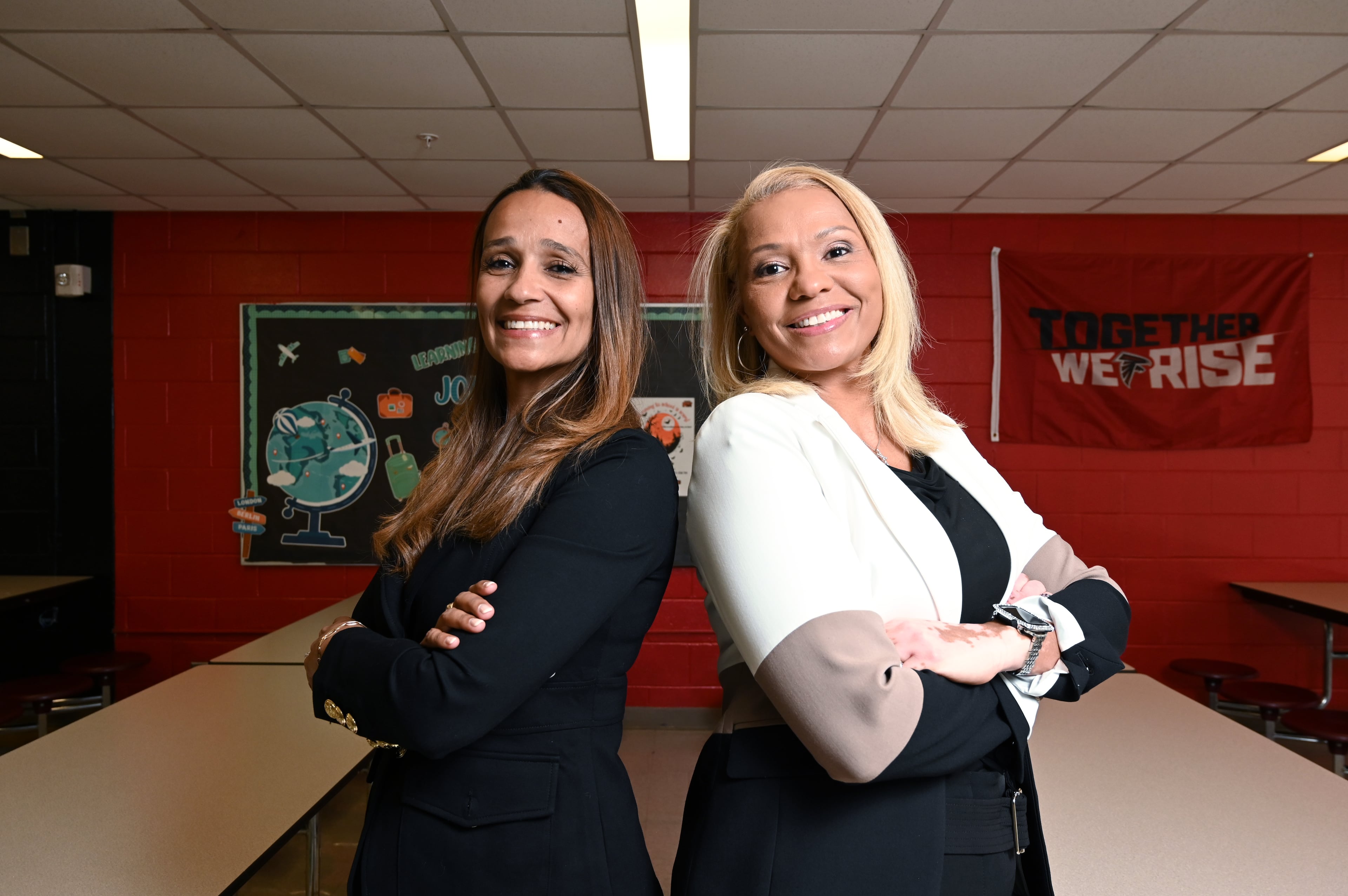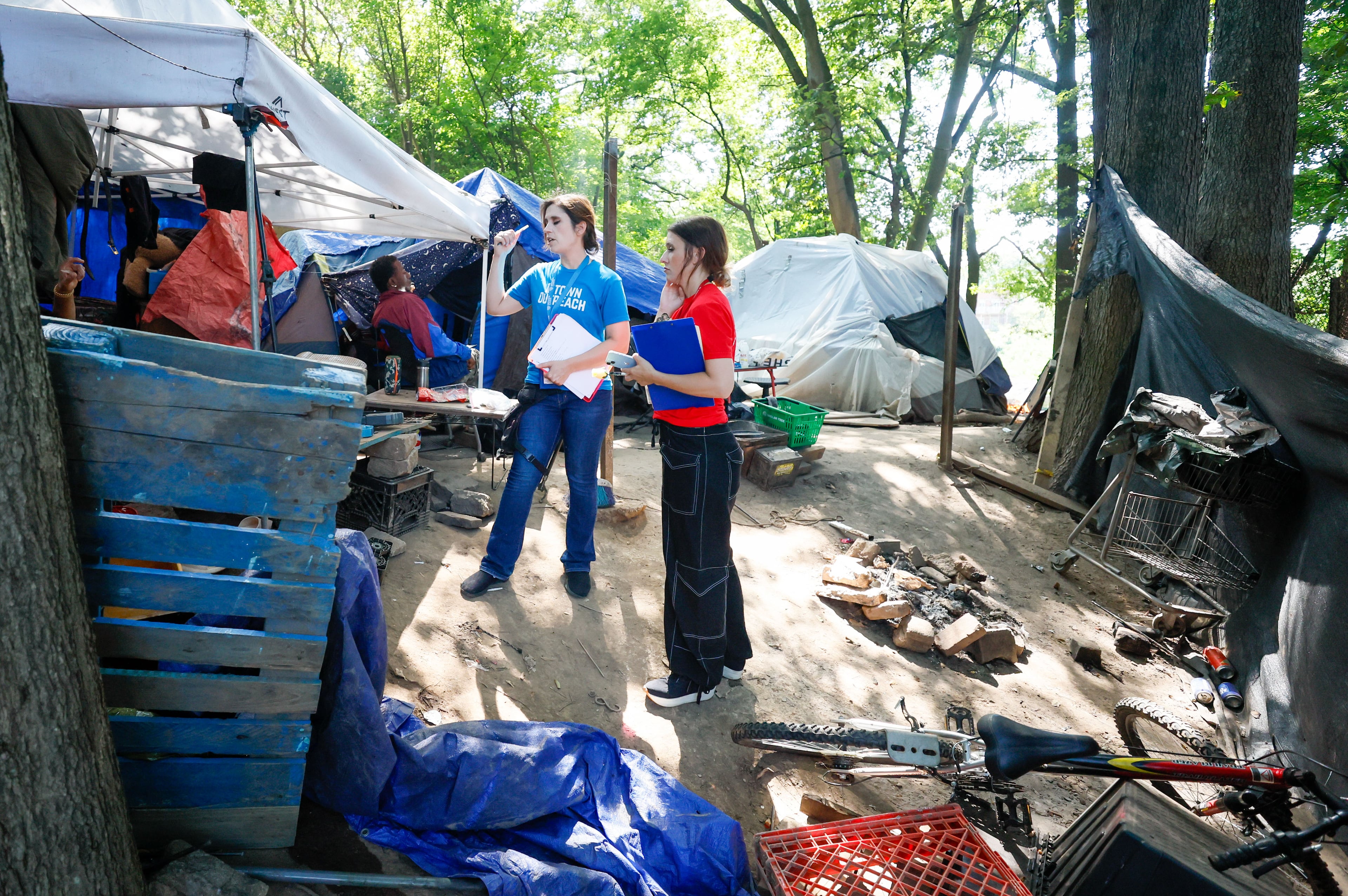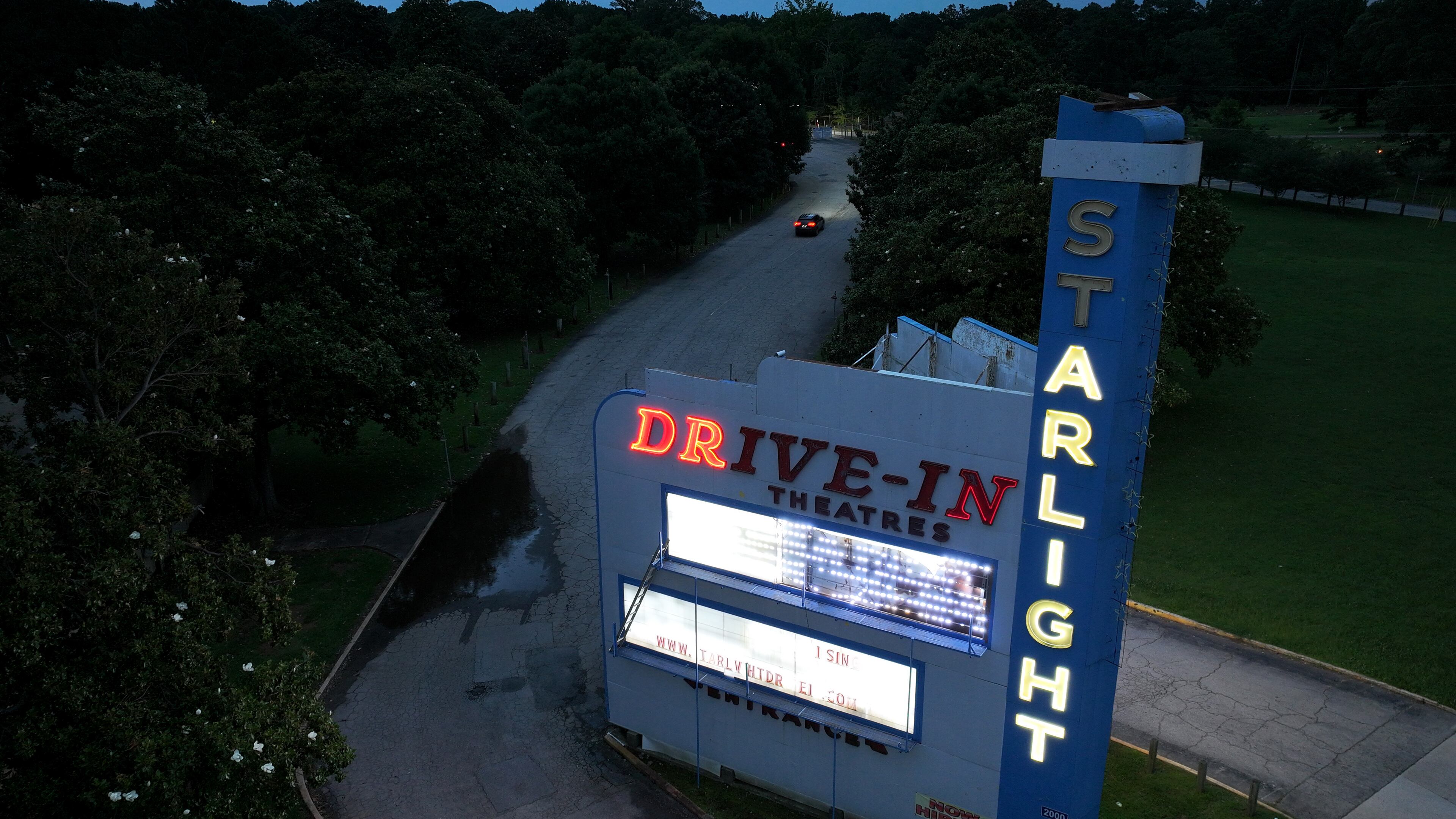
‘It’s just us’: More than 75 years in, Atlanta’s last drive-in theater stands
When evening came, Steve Ware and Samantha Wade loaded his white GMC Yukon with snacks and soft drinks, blankets and pillows. Adventure awaited.
Oh, right, the kids. Hop in, they said. Like rabbits they jumped. Ware, at the wheel, left his East Lake home and headed east. He didn’t go far before hooking a turn at a big neon sign.
A quick stop, a count of heads, admission paid. The big GMC headed down a steep incline to a paved parking lot. It rose and fell in waves, as if a rolling ocean had suddenly turned to asphalt.
They backed into position in front of a big screen partially obscuring a stand of pines. They unfolded chairs and arranged pillows. Wade found snacks for her kids, Henry Strain, 11, and Eva Strain, 8, as well as her boyfriend’s youngsters, 11-year-old Charlie Ware and Eliza Jane Ware, 9.
With thunder rippling in the west, they awaited the opening scenes of “Lilo and Stitch,” the live-action film remake of Disney’s 2002 cartoon.
They were at the Starlight.
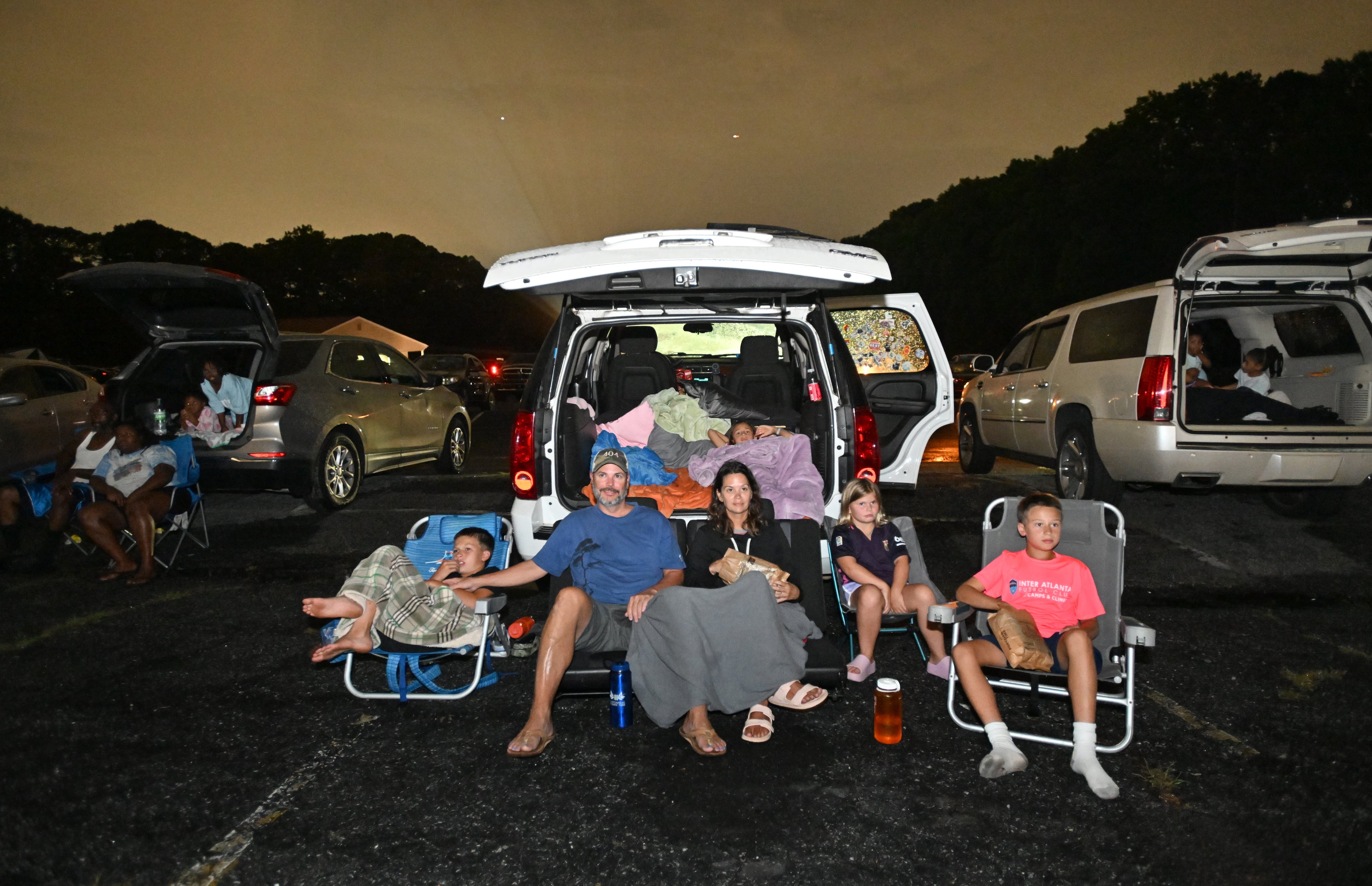
Like the Clermont (Hotel) and Manuel’s (Tavern), the Starlight Drive-In has achieved first-name notoriety as an Atlanta institution. It’s the only drive-in left in Atlanta.
Want to get the kids out of the house? Your sweetie in your arms? Your buddies out for a night of jovial foolishness? Point your cruiser to the big marquee on Moreland Avenue just south of East Atlanta Village. The theater is a part of Atlanta’s identity ― especially summer.
If ever there is a Starlight season, it is now.
Ware gets it. He recalls riding in the family station wagon to a drive-in near his boyhood home in Spartanburg, South Carolina. He wore pajamas and sat on the car’s long hood, ate s’mores and drank in the freedom that summertime darkness brings.
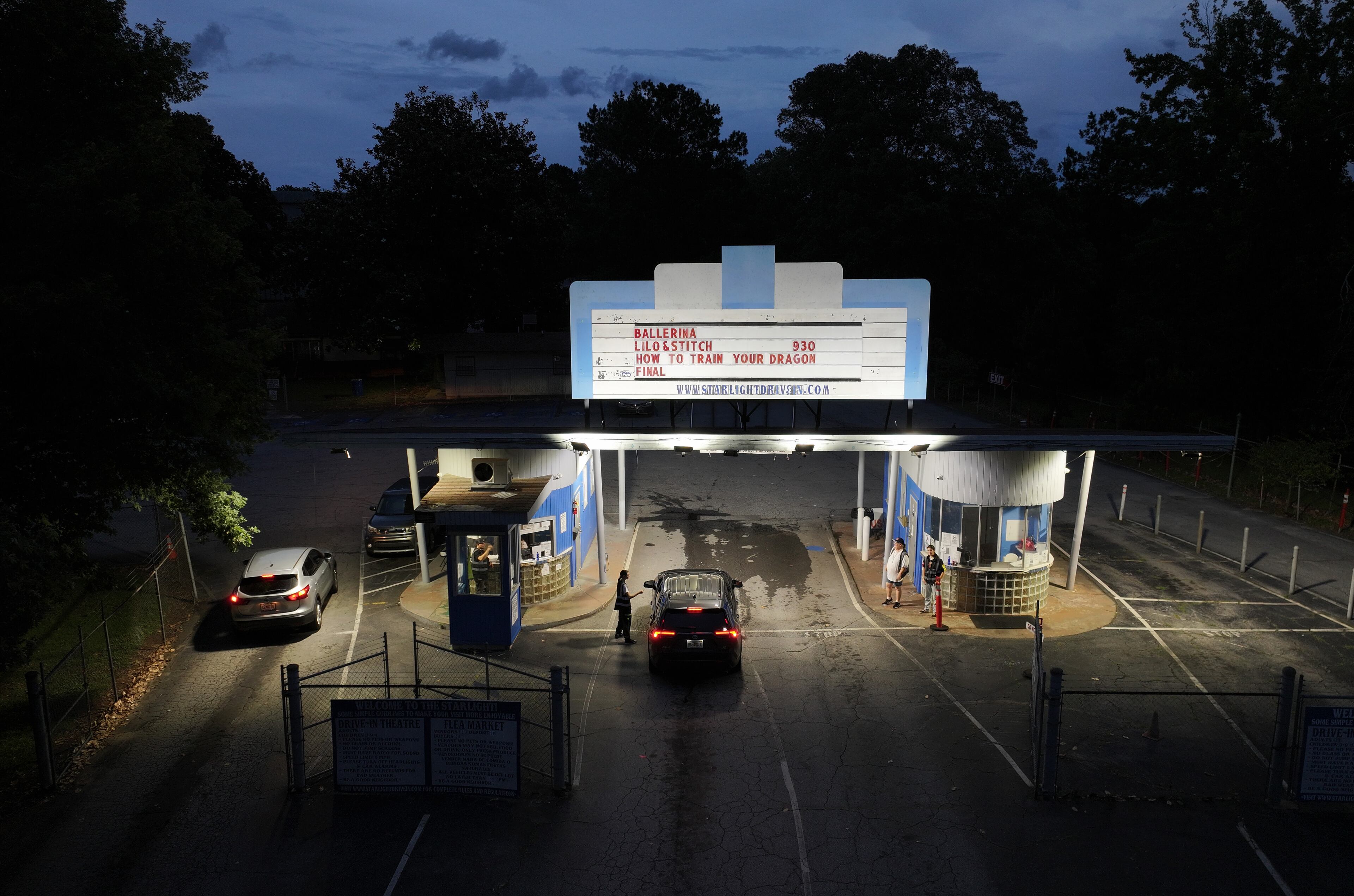
“It’s part of what we did growing up,” said Ware, 50.
“This is a little more freedom” than watching a film at an indoor theater, said Wade, 45. She nodded at her two. They peeped back, wide-eyed as owls. “They can move around out here.”
“The screens are big!” said Eva, who’ll be in the third grade this fall.
A voice added from the darkness: “Huge!” — Eliza Jane, piping up from somewhere in the mix of arms and legs.
They settled down to wait as more cars, trucks and SUVs found places around them. Dusk turned to night. At 9:30 p.m. — darkness, finally! — an image flickered on the screen.
At that moment, the visitors were part of something communal ― a shared story of the good guys winning, of the boy getting the girl, of love triumphing. All in the comfort of your own car.
That’s been the story of the Starlight since 1949.
To understand the Starlight’s appeal, you have to back up almost a century, to the early 1930s. That’s when Richard Hollingshead Jr. nailed a screen on a tree in the backyard of his New Jersey home. He put a radio behind it. Then he mounted a Kodak projector on the hood of his car and aimed it at the screen. With a couple of clicks, he had motion and sound ― and an idea that would transform American entertainment.
After more experimenting and fine-tuning, Hollingsworth and some fellow investors opened Drive-In Theatre in Camden, New Jersey, in 1933. It was the nation’s first. That enterprise didn’t last long ― the facility operated for about three years ― but what Hollingsworth created in his backyard didn’t falter.
Drive-ins began sprouting like dandelions after a summer shower, brilliant and beckoning. They spread in all directions, including south.
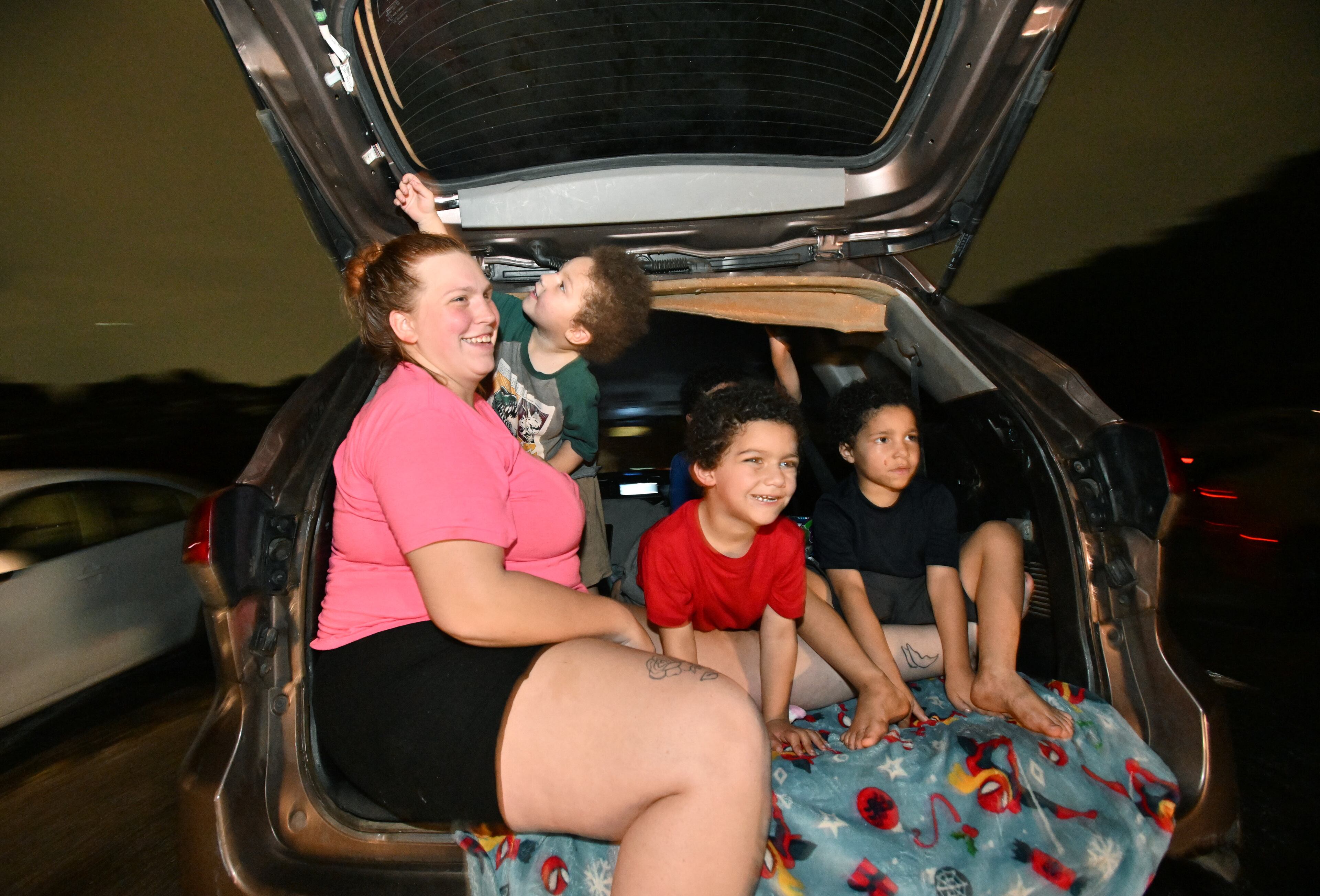
Sometime after World War II, a man named Fred Coleman eyed a rolling tract just off Moreland Avenue near Atlanta. Back then, it was just far enough from downtown to be affordable to purchase, but close enough that people would drive out to see a film. In June 1949, Coleman opened what was billed as the South’s largest drive-in, with room for 900 cars. The first movie on its 96-foot-high screen: “The Inside Story,” a comedy about a fortune in cash ― $1,000, a lot of dough seven decades ago ― that goes missing.
Those were the heydays of the drive-in. By the mid-1950s and into the 1960s, more than 4,000 dotted the American landscape. The Atlanta area had seven.
Now?
“It’s just us,” said Tonia Lonaker, a Starlight veteran. She started work at the drive-in when she was 15, slinging hot dogs and sliding bags of popcorn to hungry customers. That was 24 years ago. Now she’s the manager, living in a house on-site with her husband, John Lonaker, and their four children, 8 to 20. Like their mama, the two oldest work at the drive-in. It’s a family thing.
The bonus to living on-site? “I can come out and get done what needs to be done.” The downside? It’s the same thing: If she’s on-site, she’s on call. “I work all the time.”
Lonaker noted that the theater’s signature neon sign, battered by a “little twister” two years ago, will be repaired. At the moment, one side of the marquee reads “ST LIGHT” and the other announces, “ARLIGHT.”
Lonaker, 39, has seen the drive-in evolve, adding screens over the years as well as establishing a weekend flea market. Now there are four screens ― three that operate nightly, with the fourth as a backup ― but the Starlight once offered six. Those old speakers that hung from car windows, which made the film’s actors sound as if they were stuck in a well? They’ve made way for an FM audio system. Gone, too, are those old projectors; these days, the films are digital. The theater is no longer locally owned, either. It’s part of De Anza Land & Leisure Corp. of California.
The Starlight now shows only the latest releases. Its snack bar, a cinder-block building with linoleum floors, blessedly cool on summer nights, features soft drinks, candy, chips, nachos and popcorn. That’s popped in a machine on the counter; the sight of kernels exploding is mesmerizing.
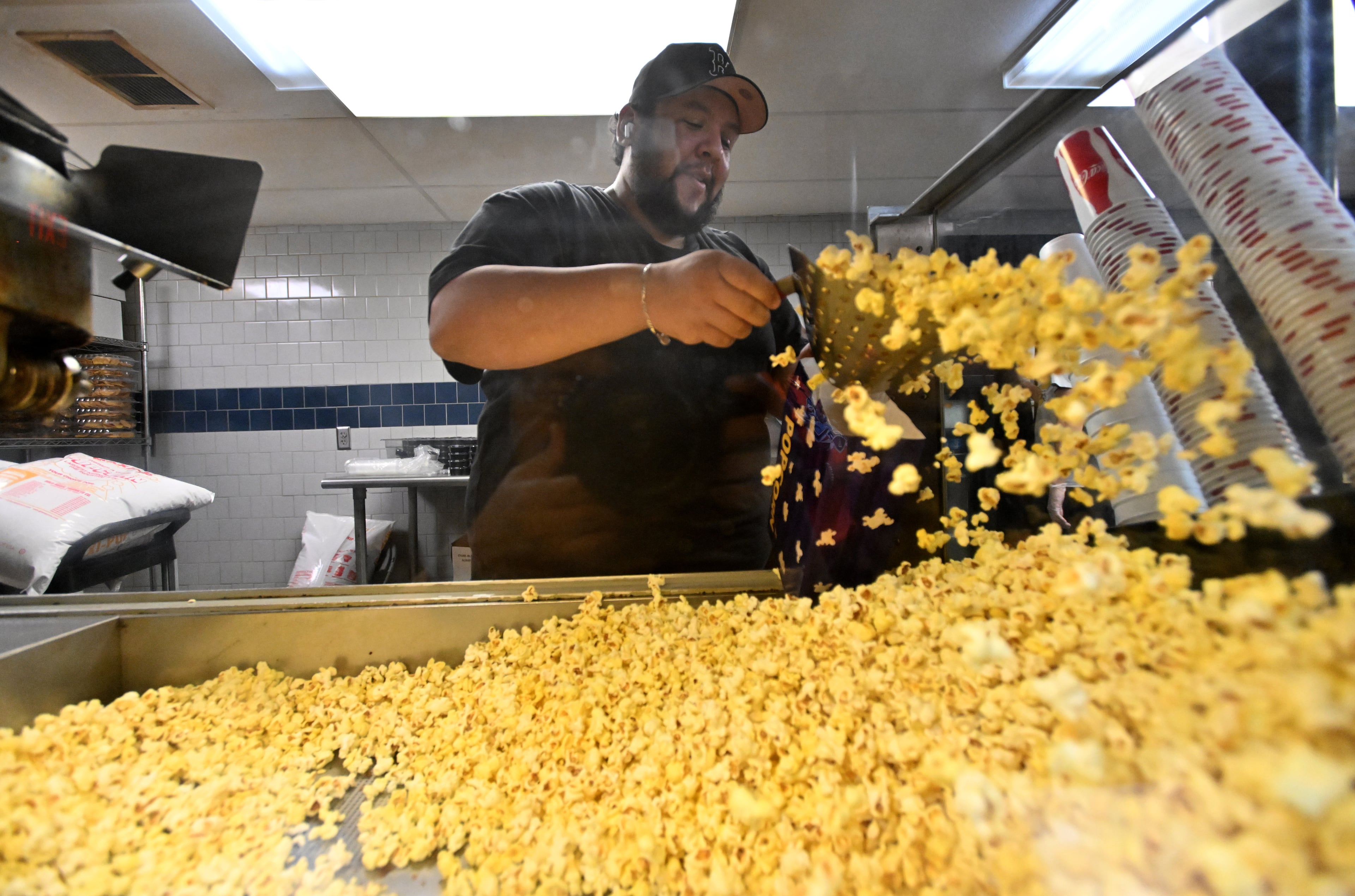
Screens often feature two films, back-to-back, or sometimes (depending on a movie’s popularity) show the same movie twice in one night on the same screen. The theater discourages switching screens, especially on busy weekend nights.
The only hard-and-fast rule: no grills. Until a few years ago it was OK to bring a grill and burn some wienies or hotdogs by the light of the screen. That policy changed the night a bonehead dumped hot coals in a trash can.
Still, said Lonaker, some things do not change ― people, for example.
“You see and hear everything out here.”
Sometimes it’s what you don’t see that matters most. If a vehicle remains in the lot after everyone has left, a drive-in employee hops in a theater car to make sure everything is OK. Maybe it’s a dead battery?
Or maybe it’s a live event taking place behind locked doors.
“They call (drive-ins) the cheap hotel,” she said. “I try not to go knock on windows.”
Everyone has a Starlight story. They may stem from goofiness during the Drive-Invasion, the annual celebration of classic cars, not-so-classic movies and live music that took place every year around Labor Day until the Starlight discontinued it in 2013. Perhaps something memorable occurred during Rock & Roll Monster Bash, a former summertime celebration of music and creatures too horrible for any place other than a drive-in.
Or maybe it was a guy wanting to pop the question. Alisa Chambers and her boyfriend, Jeff, visited the Starlight one evening 23 years ago, Chambers recalled in an email.
Before the main feature, she looked up to see a name she recognized on the screen ― hers. “An amazing surprise to see my name followed by, ‘Will you marry me?’ up on the screen.”
For the record: She said yes. The two now take their kids to the Starlight.
When Penny Bean moved to Atlanta in 1999, she was pleased to learn that her new city had a drive-in theater. Going would remind her of growing up in Memphis, where she and her parents watched the big screen under the stars.

The Starlight, she said, was a little spot of sanity during the pandemic shutdown: “The drive-in was packed,” she wrote in an email. “It felt like the only normal thing we had left.”
Hattie Knox Gelhausen remembered going to see “Twister” at the drive-in ― and watching as a real-life thunderstorm rolled in. “It felt increasingly like you were in the real storm. Epic!”
Another time, she was watching “Jurassic Park,” the every-nightmare-come-true film about dinosaurs on the loose. The film was playing on two screens at staggered times. “You could hear dinosaurs in the distance, seemingly coming from the woods.”
D. Vogel likes these sorts of tales. He’s vice president of the United Drive-In Theatres Owners Association, a nonprofit organization devoted to promoting drive-ins. It also keeps an inventory of drive-ins. As of October, 283 drive-ins operated nationwide; of that number, 161 are association members.
He knows that drive-ins face challenges ― higher costs, the rise of streaming services, the vagaries of weather and more.
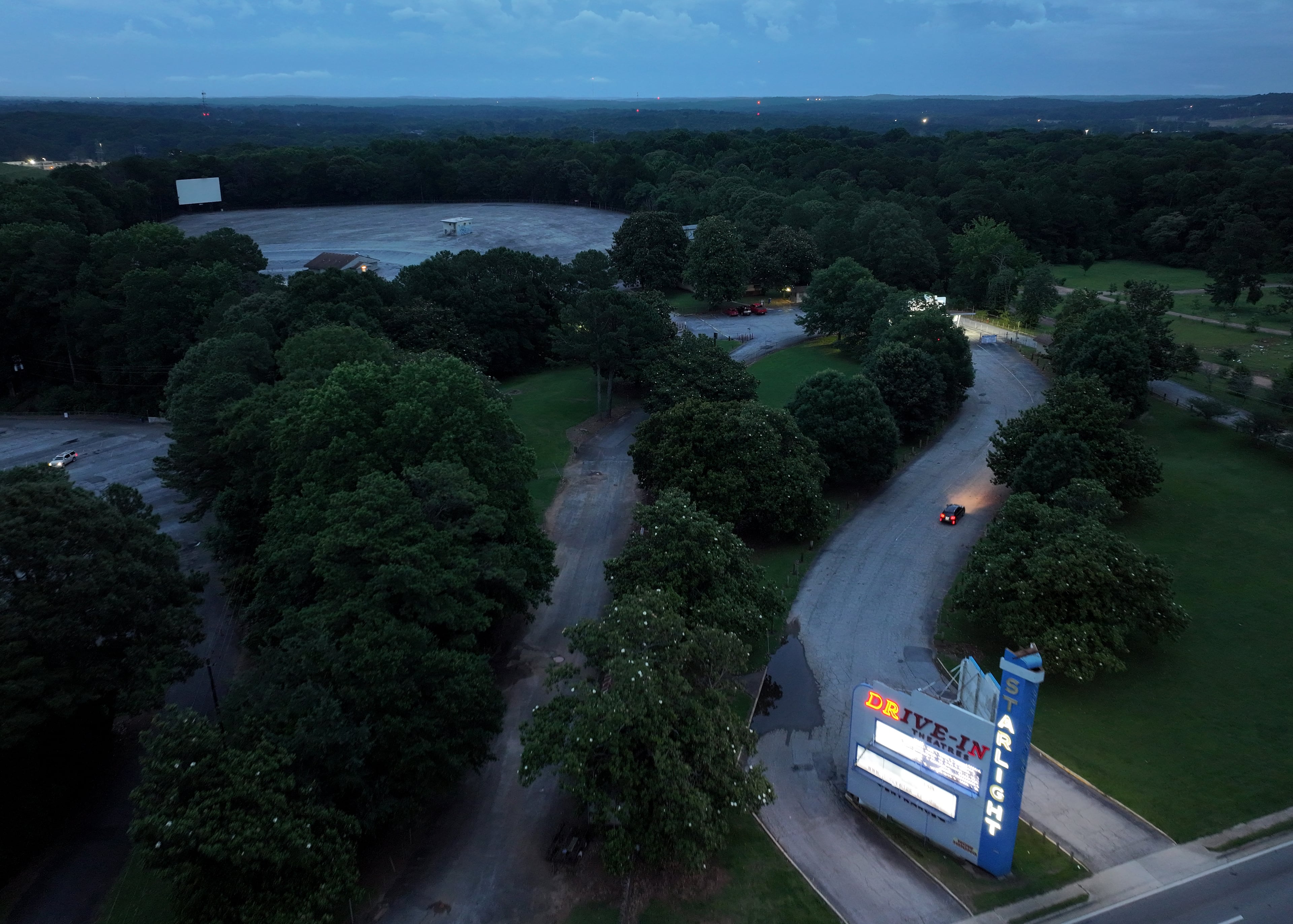
Still, drive-ins have an old-fashioned charm that some folks cannot resist, he thinks. “You couldn’t go more backward in technology than a drive-in theater.”
Low-tech seemed to be working for Quintis and Jordyn Johnson. A recent Starlight night found them also awaiting “Lilo & Stitch.” With them were the Johnson boys: Zaidyn, 7; Zyvon, 6; Zaier, 5; and Zaki, who was 3 that day. They nearly vibrated with anticipation. You’d find less energy in a blender.
Their dad, of Austell, remembered going to drive-ins when he was young and waking up when the car bumped into the driveway returning home. “It’s very family-oriented,” said Jordyn. “Very old-school.”
Night finally came. It fell heavy as a stage curtain. On the screen, an image flickered. The Johnson boys settled down.
They were at the Starlight.
If you go
Starlight Drive-In. $10 per person, $1 age 3-9. Open daily, rain or shine, except Christmas Eve and New Year’s Eve. Flea market 6 a.m.-3 p.m. Saturday-Sunday. 2000 Moreland Ave. SE, Atlanta. starlightdrivein.com
